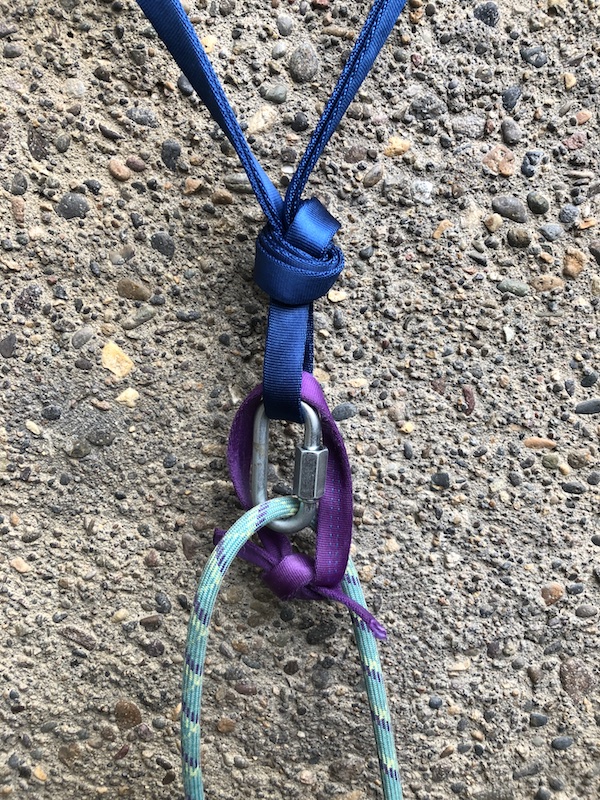Back up that single point rappel anchor
Every climber will someday find themselves at a rappel anchor that's set with a single Less Than Ideal rappel point. Maybe it's a skinny rap ring, or maybe it's a small diameter hardware store quick link, like this example.
(Note: You can buy quick links properly rated for climbing that are fine to rappel from, such as these from CAMP. These are just $3, CE rated, and around 40 kN - a much better choice than one from the hardware store.)
You have a choice: Rappel on that one point, or back it up somehow.
Now, lots of people are going to be just fine rappelling from a single quicklink. For canyoneers it’s common, and it's probably going to work great 99.9% of the time. But, if you're a more conservative climber, for whom redundancy in anchors gives you a warm fuzzy feeling, especially when you are completely reliant on them when rappelling, you have a few options.
Note: It's best practice to close the sleeve of the quick link by screwing it down toward the ground. This means that gravity is helping keep the sleeve closed. A little pneumonic to help remember this is: “Screw down so you don't screw up.” If you have a link that you want to fix it more permanently, give it an extra turn with a pair of pliers; a multi-tool is your friend.
If you want to back up that one point, the easiest thing to do is sacrifice a carabiner off your rack and just leave it. Unless you’re a serious cheapskate, this is typically the best option.
Or, you could back it up with a carabiner for everyone who is rapelling except the last person, and then that last person removes the carabiner and raps on the single quick link. (The traditional rule of thumb for this is that the lightest person goes last. I have a feeling this rule was made up by heavy people.)
But, for the frugal climbers out there who can't even stand to part with a $5 carabiner, here's another option.
Cut about a bit under 2 feet of cordelette, sling, or whatever reasonably strong cord you have with you. (Yes, that looks like it's going to be too much, and no it won't be, ‘cuz water knots always take up more webbing than you think they will.) A rule of thumb in the field: measure about three hand spans, my hand span is about 7 inches. And yes, you do need to have a knife for this.
This is yet another reason to bring along an '“alpine runner,” a 9 foot length of 9/16” tubular webbing, tied in a double runner length loop. It's very inexpensive and easy to cut up and leave behind for little projects like this.
Tie it in a loop (here with a water knot) through the anchor point, and make the loop a little bit longer than the metal connection.
Now, thread your rappel rope. Because the backup webbing is slightly longer than the quicklink, when you weight the anchor and pull your rope, any friction is going to be on the quicklink, not the webbing backup. However, if the metal were to somehow fail, the webbing will catch the rope.
Doing this of course, takes a knife, and some sort of extra sling material, and the time to rig it. Like I said, faster and probably a bit safer is just to leave a carabiner. Don't be a cheapskate. :-) Or, if you want a little extra security even on top of that, put some tape on the carabiner gate to make a cheapskate locker.




